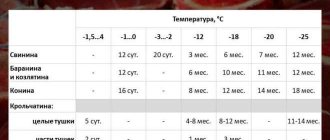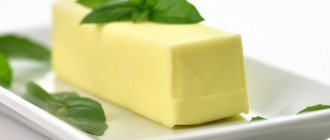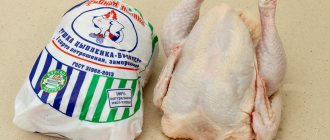Buckwheat, even after cooking, retains all its taste and nutritional properties. Nutritionists advise using it 2-3 times a week to prevent various diseases of systems and organs. The porridge cooks quite quickly - only 20 minutes, but housewives often make mistakes with the proportions of the product and the family is not able to consume all the porridge at one time. Then the buckwheat is stored in the refrigerator. The shelf life largely depends on the method of preparing the cereal; it can vary from a day to a week. In order to preserve the taste and beneficial properties of buckwheat porridge as much as possible, it is important to follow storage rules.
How to properly store boiled buckwheat in the refrigerator?
To keep buckwheat porridge fresh as long as possible, it is important to follow storage rules. It is recommended to avoid high humidity and high temperatures. In such conditions, various microorganisms and molds multiply rapidly. Also, if stored improperly, porridge can become weathered and lose its taste and nutritional qualities.
To prevent this, it is important to follow the following rules:
- Store the finished product only in the cold.
- Use glass, ceramic or metal containers with a tight-fitting lid for storage. Plastic and foil will not work.
- If you made a mistake with the proportions and you end up with too much boiled product, it is recommended to freeze some of the porridge.
- Buckwheat absorbs foreign odors very quickly. Therefore, when storing in the refrigerator, isolate the porridge from other products with a strong odor.
- Store the porridge at a temperature between +2°C and +4°C.
Try to prepare buckwheat porridge for one serving, since only a freshly cooked product contains the maximum amount of useful elements. After 3 days, the porridge loses its beneficial properties. The calorie content remains the same, but the vitamins and minerals completely disappear.
Rules
To preserve the taste of cereals as much as possible, you must adhere to the rules presented below.
- Be sure to pour purchased bulk products into special food containers.
- The storage location should be dry and dark, with good ventilation.
- Optimal storage conditions are temperature from –5 to +5 °C and humidity 60–70%. Make sure that the maximum temperature does not exceed +18 °C.
- Do not keep strong-smelling foods (smoked meats, spices, etc.) near cereals.
Top articles: Tomato juice for the winter
Optimal flour storage conditions
How to properly store yeast?
Methods for cleaning stainless steel spoons and forks
How long does boiled buckwheat last?
In order for cooked cereal to bring maximum benefit to the body, it is advisable to eat it immediately after cooking. A product that has undergone additional heat treatment is absorbed more slowly by the body. As a result, this leads to bloating, flatulence, constipation or diarrhea. Boiled buckwheat has a much shorter shelf life than raw buckwheat. After preparing the porridge, you should wait until the product cools completely. This will take approximately 2 hours. The shelf life of porridge largely depends not only on the method of preparation, but also on the storage method.
At room temperature
The room temperature ranges from +15 to +25°C. Every room will have different levels of humidity and air circulation. But in the kitchen the temperature is always higher, since a gas or electric stove periodically works here:
- Buckwheat cooked in water can be stored on the kitchen counter for no more than 4 hours. In this case, the average air temperature in the room should be within 18-22°C.
- Buckwheat cooked in butter, milk, with the addition of vegetables, meat and other ingredients is stored for no more than 1.5-2 hours.
In boiled buckwheat in a warm room, pathogenic microorganisms multiply quickly, so you can easily become poisoned with this product.
On the balcony
If there is a power outage or the refrigerator breaks down, it is recommended to take the finished product out onto the balcony. But this should be done taking into account the temperature regime:
- at a temperature of 0°C the shelf life is 3 days;
- at temperatures down to -5°C, the shelf life is 7 days.
It is not recommended to store a container of porridge on the balcony if the temperature there is above zero and there is high humidity. In case of severe frost and the room temperature drops below -5°C, buckwheat may freeze. It is suitable for consumption, but loses its taste and nutritional qualities.
The difficulty of storing buckwheat porridge on the balcony is that in such a room there are frequent temperature changes. Because of this, the product can quickly deteriorate.
In a refrigerator
The optimal temperature for storing the finished product in the refrigerator is +4°C. Under these conditions:
- buckwheat cooked in water is stored for 3 to 7 days;
- porridge cooked in milk and butter stays fresh for no longer than 24 hours;
- Buckwheat porridge cooked with the addition of meat, vegetables, and mushrooms will be suitable for consumption within 3 days.
You can also place buckwheat porridge in a vacuum bag and put it in cold water. This will extend the shelf life by another day.
In the freezer
It is permissible to freeze boiled cereals. To do this, use a food container with a tight lid. As needed, defrost the buckwheat and serve it to the table. This method allows you to store the product for 2-3 weeks. Defrosting should be done gradually. Remove the porridge from the freezer and wait until it defrosts on its own. Then heat the crumbly porridge.
Let's talk about the benefits
It is best to eat buckwheat porridge immediately after cooking. If you want to preserve its beneficial properties as much as possible and extend its shelf life, store cooked buckwheat in its pure form without any additives. As already mentioned, the presence of oil, meat components and other ingredients in porridge significantly reduces its shelf life for consumption.
Buckwheat that has just been cooked has the most benefits. Of course, during the heat treatment some part of the micro- and macroelements is lost, but it is insignificant.
Benefit:
- normalization of intestinal motility;
- improving the functioning of the heart muscle;
- strengthening vascular walls;
- helping to increase hemoglobin levels;
- improving the functioning of the digestive tract;
- replenishment of folic acid deficiency.
We have already discussed how diverse the component composition of buckwheat is. B complex vitamins help normalize the functioning of the nervous system. But potassium and magnesium are the best helpers for the heart muscle and blood vessels. Few people know that buckwheat contains a sufficient amount of protein of plant origin. There are approximately 13 grams in a 100-gram serving. Agree, a lot. That is why buckwheat is used as a main dish during monotonous diets.
On a note! Some traditional healers are convinced that regular consumption of buckwheat porridge helps to cope with insomnia and get rid of neuroses and unreasonable anxiety.
In order to gain exceptional benefits, you should pay special attention to the choice of core. It is best to give preference to selected varieties. Thanks to the transparent packaging, we can always determine the condition of buckwheat. Carefully study the labeling and information on the packaging. If buckwheat has been stored on a store shelf for a long time, it is better not to buy it.
It is important to follow the cooking rules. Doctors believe that it is best to steam buckwheat kernels with hot water or fermented milk drinks. Such porridge will have the most benefits, although it will not be stored for long, even in the refrigerator.
When should you not eat buckwheat?
The shelf life of the product depends on the preparation method and additives. Buckwheat, cooked in water without oil, lasts the longest. Ready-made porridge does not tolerate heat. At temperatures from +8°C and above, bacteria begin to rapidly multiply in it. You can tell if buckwheat has gone bad:
- by unpleasant odor;
- sour and rancid taste;
- mold;
- mucus.
The presence of at least one of the listed signs indicates that the porridge should not be consumed. There is no need to try to save the product by boiling, frying or using seasonings.
Signs of spoiled cereal
You can store buckwheat in different ways, but even if the conditions are met, after a long period of time it is better to check the kernel for suitability for consumption. To do this, pour a little cereal onto a plate and look at its appearance: the kernels must be clean, without signs of mold or mildew, have the original color and smell, and do not contain traces of vital activity or insect larvae. Foreign odors, sticky grains, foreign impurities and chipped kernels indicate poor quality of the product. If you have doubts about the suitability of buckwheat for consumption, you can grind a spoonful of buckwheat and heat it in a water bath for several minutes. The cereal is considered suitable if there is no unpleasant odor. You can also chew a few grains or cook a small amount of cereal to test to determine if it is musty or rancid.
How to store buckwheat in the refrigerator?
To keep the product fresh longer, it is important to use the correct storage containers. This should be a container with a tight-fitting lid:
- Glass jar or container. Glass does not allow foreign odors to pass through. Pathogenic microorganisms can be easily eliminated by regular washing.
- Plastic container. A container made of such material is often deformed, the lid does not fit tightly enough, and as a result, foreign odors penetrate into the porridge. Over time, microcracks form on the plastic, in which pathogenic microorganisms firmly settle. And even after washing, the container retains an unpleasant odor.
- Metal container. Such a container is unsuitable for storing buckwheat, as it quickly rusts and is not able to close tightly. The metal also has a specific odor that easily transfers to porridge.
- Plastic bag or vacuum bag. Suitable only for freezing food at -18°C.
It is not recommended to store boiled buckwheat in the pan in which it was cooked. Otherwise, after a day the porridge will have a bitter taste.
What affects the freshness of a product?
To get the maximum benefit from the boiled product, it is important to choose the right buckwheat. Give preference to buckwheat in packaged bags without black unprocessed grains, sticks, or other grains. Otherwise the porridge will quickly spoil. If there are bugs in raw cereals, such buckwheat is unsuitable for consumption. Production time is no less important. The older the cereal, the less useful elements are preserved in it.
Raw cereals are stored in closed packaging for no longer than 2 years. It is important to observe storage conditions:
- dark room;
- air humidity no more than 70%;
- air temperature no more than +25°C.
Ready porridge should not be left on the table in direct sunlight. After defrosting, reheat only the amount of food you can consume at one time. The product remaining in the plate cannot be reheated, as this promotes the proliferation of pathogenic microbes. It is recommended to throw away such leftover food to avoid poisoning.










